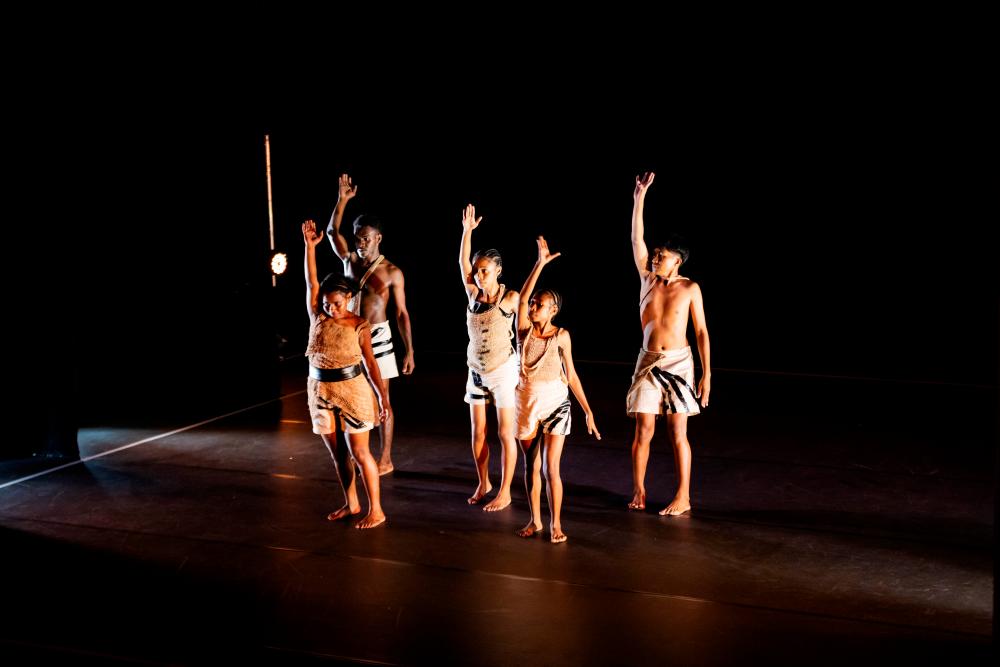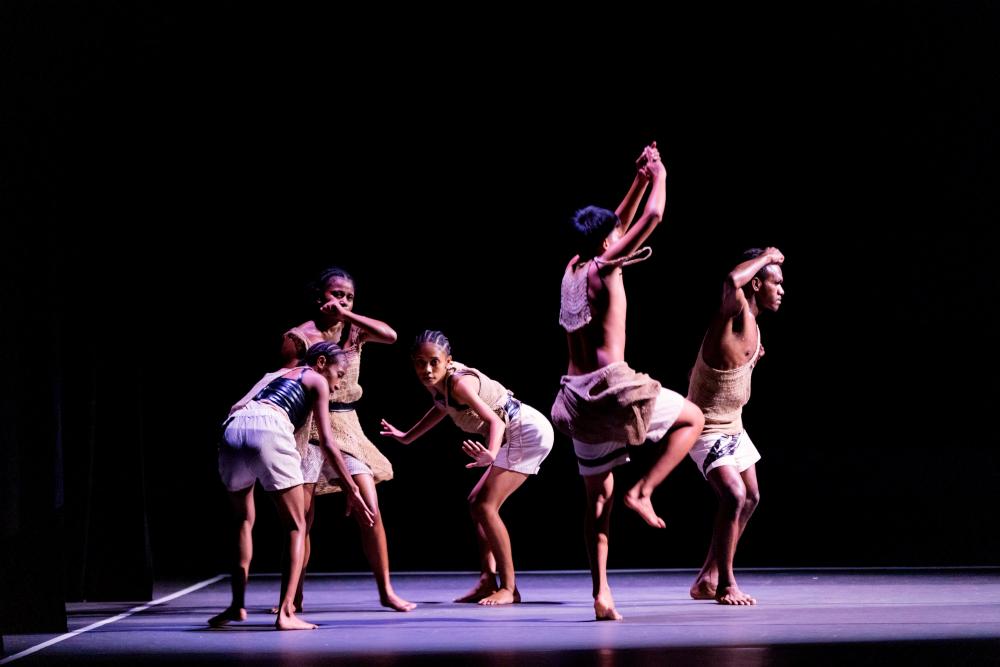THE dimly lit hall of Panggung Bandaraya set the tone for the premiere of Kāse Seka by Indonesian choreographer Eko Supriyanto. As part of the Kreatif KL Festival, this ritualistic dance performance, inspired by the Seka tradition of Papua Barat, captivated its audience with an intricate interplay of movement, sound and symbolism.
Though devoid of dialogue, the performance conveyed messages about humanity’s intrinsic relationship with nature, the essence of purification and collective unity.
Kāse Seka invites its audience to go on a profound spiritual and ecological journey. It emphasises the concept of gotong royong, a spirit of cooperation and balance, reflecting Papuan culture’s harmonious way of life. The performance oscillated between intimate gestures of cleansing and powerful communal exchanges, compelling viewers to pay attention and interpret its nuanced storytelling.

Storyline that speaks without words
What stood out in Kāse Seka was its ability to tell a story that was both apparent and elusive. The absence of dialogue did not hinder comprehension but instead, it demanded a level of focus and openness from the audience. The dancers moved with precision and purpose, portraying rituals of cleansing, welcoming and unity.
The storyline unfolded through these gestures, layered with meaning that invited interpretation. At times, the narrative seemed clear, a collective ritual signifying environmental and spiritual renewal. At other moments, it veered into the abstract, encouraging viewers to connect the dots through their perspectives. This deliberate ambiguity gave the performance its strength, as it prompted reflection and engagement on a deeply personal level.
The hauntingly minimal yet evocative soundscape heightened the performance’s impact. From the distant echoes of nature to the rhythmic chants and beats, the music complemented the dancers’ movements, creating a multisensory experience that resonated long after the final bow.
Dancers as storytellers
The dancers of Kāse Seka were the heart of the performance, each bringing a unique energy and presence to the stage. Their movements, inspired by the traditional Seka dance and enriched by Eko’s contemporary sensibilities, were fluid yet deliberate, grounding yet transcendent.
Galang Putra Ramadan, Muklis Akbar Sasefa, Putri Agnes Situs, Santina Sabuku and Henni Mery Wanasira performed as an ensemble that embodied unity while allowing individual brilliance to shine. Their synchronised movements and moments of introspective solitude mirrored the duality of community and self, key themes in Papuan culture.
One of the performance’s most striking moments occurred during a sequence of collective cleansing gestures. The dancers’ movements, mimicking the act of purifying water and land, felt almost ritualistic, evoking a sense of reverence for nature and the environment.

Visual and auditory feast
The lighting and costumes in Kāse Seka added depth to the performance, transforming the stage into a living, breathing canvas. Lighting designer Alim Jeni played with shadows and hues, creating an atmosphere that shifted between serenity and urgency. The warm, earthy tones of their costumes complemented the dance’s organic themes, grounding the performance in the natural world.
Composer Sigit Pratomo’s score played an equally vital role, blending traditional sounds with contemporary elements. The music underscored the dancers’ movements, adding emotional layers to their performance and enveloping the audience in an auditory embrace.
Call to open minds and hearts
Kāse Seka is not a performance to be passively consumed, it demands active participation, not in the physical sense but through intellectual and emotional openness. Its narrative and execution encourage the audience to step out of their comfort zones and experience a world vastly different from their own.
The performance exemplified the idea that art is best understood when approached with curiosity and a willingness to learn. Those who let go of preconceived notions and immersed themselves in the experience found themselves transported into the heart of Papuan culture, where the line between art and ritual blurs.

Environmental and spiritual reminder
Beyond its aesthetic appeal, Kāse Seka carries a poignant message about humanity’s responsibility toward the environment. By emphasising themes of cleansing and renewal, the performance serves as a timely reminder of the escalating climate crisis. It invites the audience to reflect on their relationship with nature and consider their actions’ impact on the planet.
Eko’s choreography beautifully intertwines cultural preservation with ecological consciousness, making Kāse Seka not just a performance but a call to action.
Kāse Seka by Eko is a masterpiece that transcends cultural and artistic boundaries. Its profound exploration of humanity’s connection with nature and its emphasis on unity and renewal make it a performance that lingers in the mind and soul.
For those fortunate enough to witness this premiere, Kāse Seka was a powerful reminder of the transformative potential of art. It is a performance that resonates deeply with those willing to open their minds and hearts, offering an unforgettable journey through tradition, innovation and the timeless bond between humanity and the natural world.









